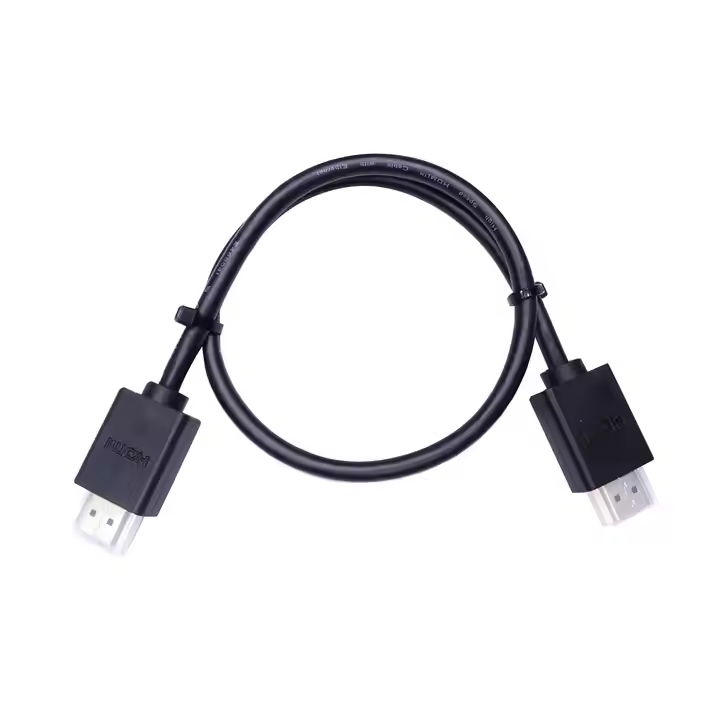Common HDMI Scenarios: How Kaweei HDMI Cables Enhance Your Home Entertainment and Office Setup
Is the HDMI Cable Easy to Use? Just Check These Four Points!
When enjoying the stunning audiovisual experience brought by audio-visual equipment in daily life, the HDMI cable is the indispensable "behind-the-scenes hero", responsible for seamlessly connecting various devices.

Many friends must have such confusion:
Facing the dazzling array of HDMI cables on the market, how on earth should we choose? What kind of HDMI cable can truly meet our needs and bring a smooth and pleasant user experience? Don't worry.
The following will reveal in detail the key points for choosing an HDMI cable.
I. Keep up with the Latest Version and Match the Image Quality Requirements
Strictly speaking, from a professional perspective, the HDMI cable itself doesn't have a strict independent version division. However, in the market circulation process, major brands generally classify HDMI cables according to the specifications of the HDMI interface, such as the commonly seen HDMI 2.0 version video cable, HDMI 2.1 version video cable, and so on.
Different versions of HDMI cables correspond to completely different specification parameter "codes".
Take the HDMI 2.0 version video cable as an example.
Its "upper limit of capability" is to stably support a high-definition picture resolution of 4K/60Hz.
If the maximum resolution of your TV or monitor at home happens to be fixed at 4K levels, then purchasing an HDMI 2.0 version cable is sufficient to easily meet your daily viewing and entertainment needs, allowing every wonderful moment to be accurately and smoothly presented on the screen.
However, with the rapid development of the times, if you are enthusiastic about chasing cutting-edge technologies, have a special preference for 8K ultra-high-definition videos, or want to experience extremely delicate picture textures in the game world, then the HDMI 2.0 version data cable may be a bit "out of its depth".
At this time, the HDMI 2.1 version video cable, which has the ability to support 8K/60Hz picture transmission, is your best choice.

It is worth mentioning that most HDMI 2.1 version cables are thoughtfully equipped with the "superpower" of downward compatibility.
Take the UGREEN HD140 HDMI cable as an example.
It can not only shine in the 8K field but also be downward compatible with multiple resolution modes such as 4K/240Hz, 2K/240Hz/144Hz, providing comprehensive guarantees for users who have strict requirements for audio-visual effects and game picture effects and pursue the ultimate experience.

II. Carefully Select the Cable Body Material to Ensure Long-Term Durability
As a durable consumable, once purchased, the HDMI cable usually accompanies us for several years or even longer.
Therefore, the quality of the cable body material directly affects its service life.
When selecting an HDMI cable, it is necessary to focus on the durability performance of the cable's exterior, such as whether it can withstand frequent "tests" of bending and whether obvious deformation will occur after bending.
Currently, the cable body materials of HDMI cables on the market are mainly.
Divided into two categories:
PVC and PVC + nylon braided.
PVC, also known as polyvinyl chloride, dominates the global application field of plastic materials with its advantages of being lightweight, waterproof, moisture-proof, and highly resilient.
HDMI cables carefully crafted from high-quality PVC materials have extremely high durability.
Even when subjected to large-angle bends, they can easily "recover" without leaving ugly creases and always maintain an elegant "posture".
If you desire to further improve the durability of the HDMI cable, you may turn your attention to HDMI cables with a PVC + braided material.
These products ingeniously use nylon material to wrap the PVC cable body, like putting a solid "armor" on it, reducing the risks of cable skin breakage and fracture in all aspects, allowing you to have no worries during use.


III. Meticulously Choose the Connector Material to Resist Oxidation and Rust
After paying attention to the cable body, the connector material of the HDMI cable cannot be ignored either.
Since most of the connectors of HDMI cables are made of metal materials, this inevitably brings the potential risk of rusting.
Generally speaking, connectors made of materials such as iron and copper have a relatively high probability of rusting in a humid environment or after long-term use.
And those HDMI cable products that pursue excellent quality often perform "magic" on the connectors - gold plating or nickel plating.
This small process upgrade can greatly improve the oxidation resistance and anti-rusting performance of the connectors, just like putting "protective clothing" on them, making them still firm and durable under the erosion of time and escorting stable signal transmission.

IV. Comprehensively Consider All Aspects and Lock in a High-Quality Option
To sum up, purchasing an HDMI cable is not as complicated as imagined.
The key lies in firmly grasping the four core dimensions of cable version, cable body material, connector material, and brand after-sales service.
A truly high-quality and easy-to-use HDMI cable must have a tough and durable cable body that can "stand firm" no matter how it is bent; it has connectors that are resistant to rust and oxidation to ensure unobstructed signal transmission; and it is indispensable to have reliable after-sales service as a solid backing, allowing you to get professional and considerate help in time when you encounter any problems during use.
Therefore, when purchasing HDMI products, everyone must pay more attention and carefully distinguish.
If you need any custom wiring harness, you can contact us.
